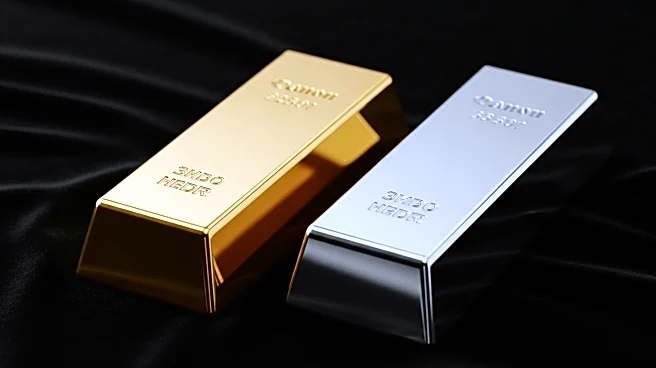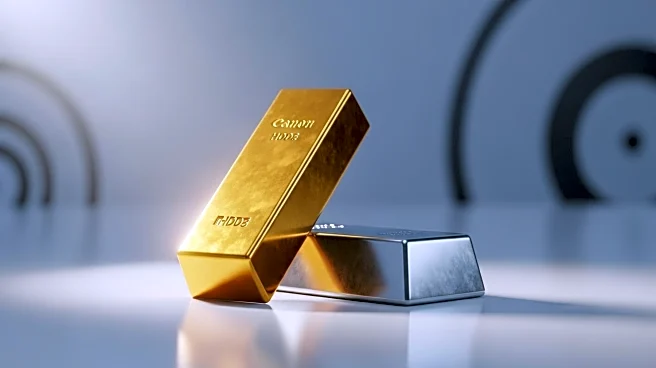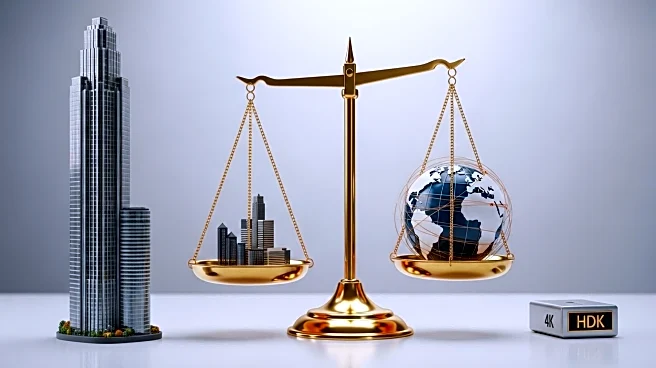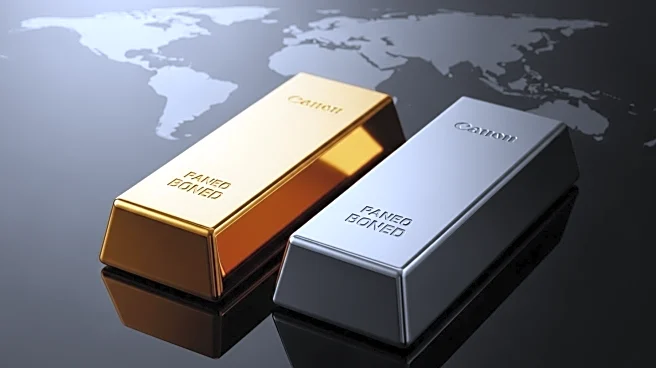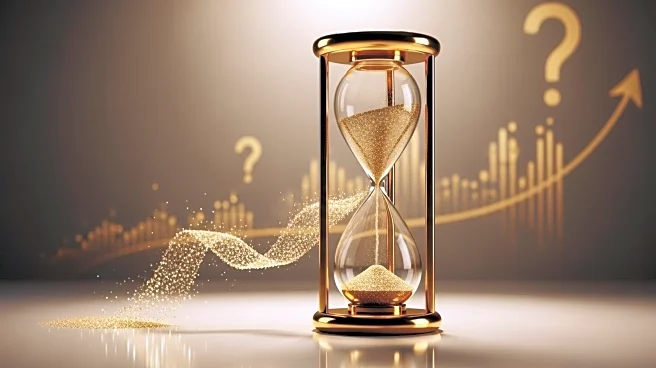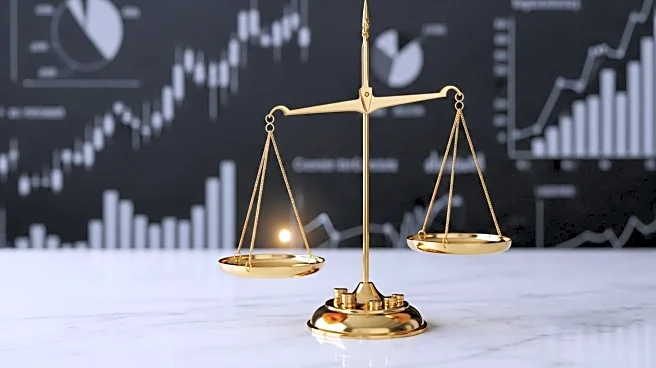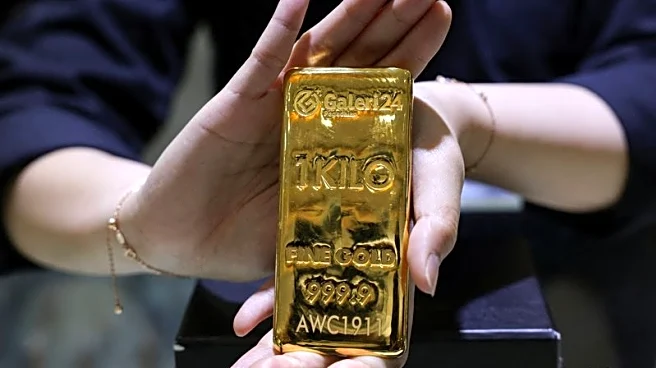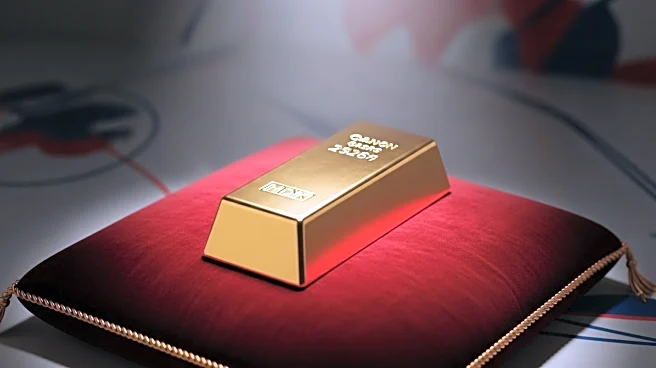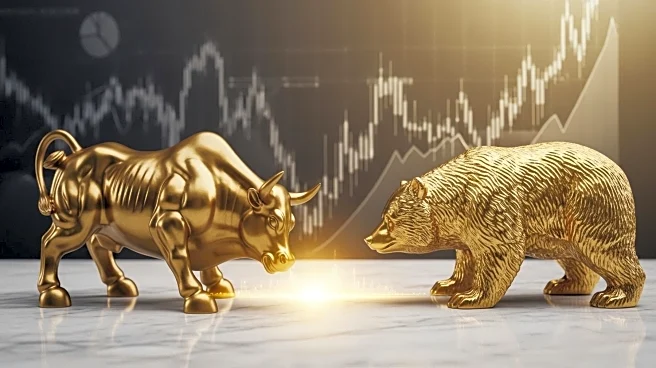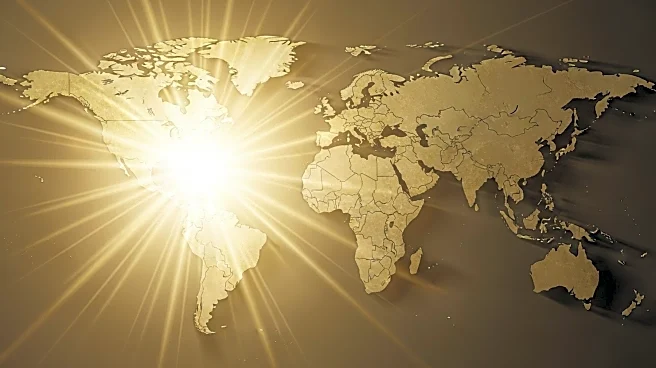What is the story about?
What's Happening?
Gold and silver have reached new record highs, driven by market volatility and geopolitical tensions. President Trump's recent threat of imposing 100% reciprocal tariffs on China has contributed to the uncertainty, further fueling the rally in precious metals. Gold has set new records 15 times since September, with a significant price increase of nearly $100 on Monday. Bank of America has responded by revising its price forecasts for gold and silver, projecting gold to peak at $5,000 per ounce by 2026, with an average estimate of $4,400. Silver's forecast has been set at a high of $65 per ounce, averaging around $56.25. Gold futures closed at $4,130, marking the largest single-day move since April, while silver futures reached a new record of $50.7, the first since 2011.
Why It's Important?
The surge in gold and silver prices highlights the growing demand for safe-haven assets amid global economic uncertainties. The revised forecasts by Bank of America indicate confidence in the continued strength of these metals, which are often seen as a hedge against inflation and currency devaluation. The geopolitical tensions, particularly between the U.S. and China, have added to the volatility, making precious metals more attractive to investors. This trend could impact various sectors, including electronics and renewable energy, which rely on silver for industrial applications. Investors and industries that depend on these metals may face increased costs, while those holding gold and silver assets could benefit from the rising prices.
What's Next?
The ongoing geopolitical tensions and economic uncertainties suggest that the demand for gold and silver may continue to rise. Investors will likely keep a close watch on developments in U.S.-China relations, as any further escalation could drive prices higher. Additionally, the possibility of a short-term pullback, as acknowledged by Bank of America, may lead to increased market volatility. Stakeholders in industries reliant on silver, such as electronics and renewable energy, may need to adjust their strategies to accommodate potential price fluctuations. The financial markets will also be monitoring central bank policies and inflation rates, which could influence the future trajectory of precious metal prices.
Beyond the Headlines
The record highs in gold and silver prices may have broader implications for global economic stability. As investors seek refuge in these metals, it could signal a lack of confidence in traditional financial systems and currencies. This shift may prompt governments and financial institutions to reassess their monetary policies and strategies to maintain economic stability. Additionally, the increased industrial demand for silver, particularly in technology and renewable energy sectors, underscores the growing importance of sustainable practices and innovation. The interplay between geopolitical tensions, economic policies, and market dynamics will continue to shape the future of precious metals.
AI Generated Content
Do you find this article useful?
